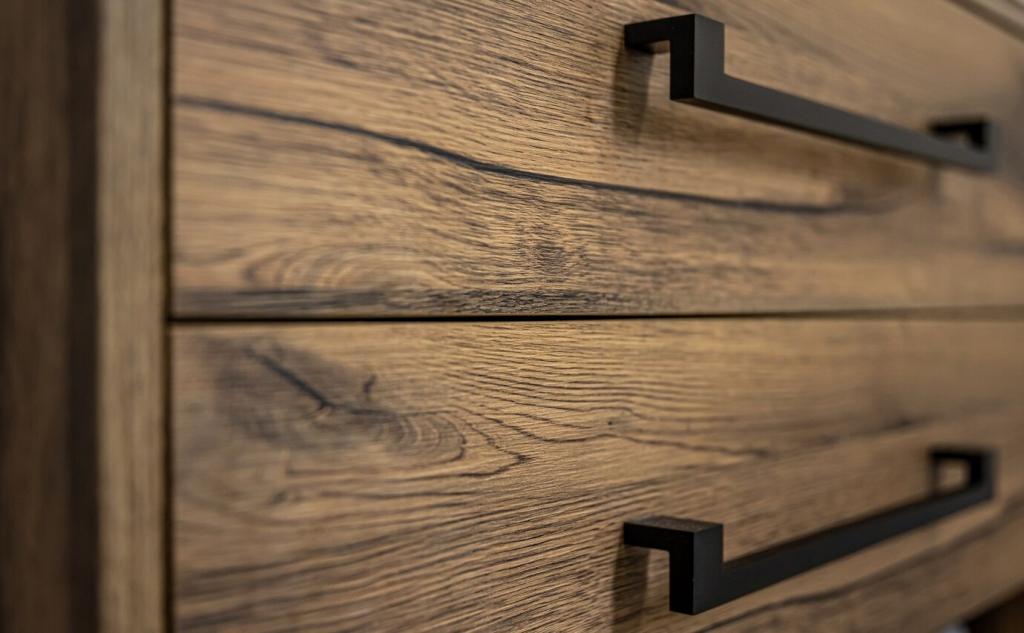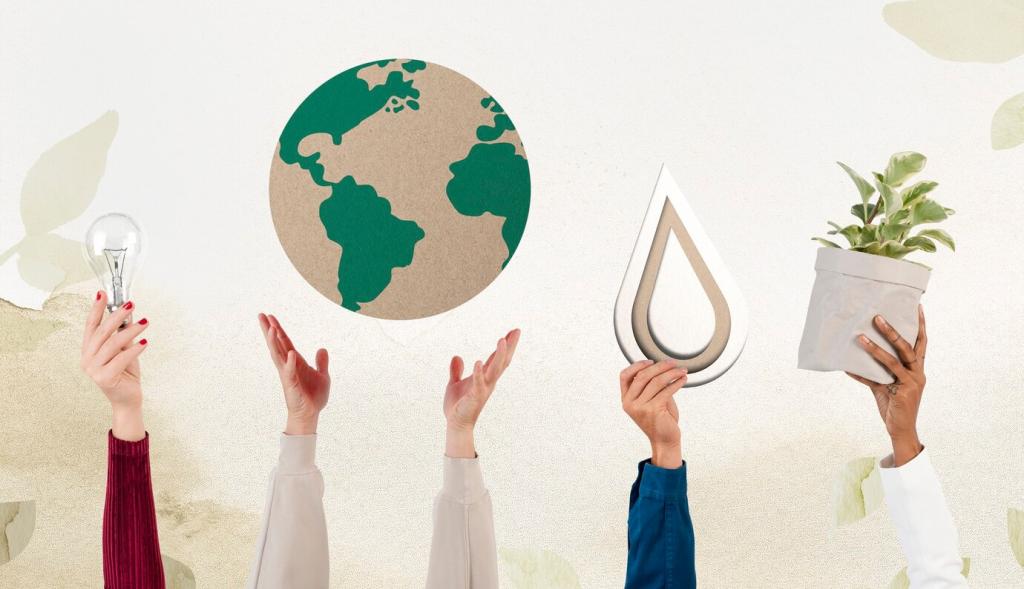
Eco-Friendly Materials and Technologies in Interior Design
Discover how eco-friendly materials and innovative technologies are transforming interior design, creating healthier living environments and reducing the environmental footprint. Sustainable practices in the industry now encompass a wide array of natural materials, energy-efficient systems, and cutting-edge technology, all contributing to aesthetics and well-being. In this comprehensive exploration, we delve into the significant trends, practical solutions, and future possibilities that make interior spaces more sustainable without compromising on style, comfort, or functionality.
Previous slide
Next slide

Organic Cotton and Linen
Organic cotton and linen are leading the shift toward greener interiors thanks to their biodegradable nature and minimal chemical processing. Organic farming methods avoid synthetic pesticides and fertilizers, improving soil health and safeguarding ecosystems. The resulting fabrics are soft, breathable, and hypoallergenic, ensuring a gentle touch against the skin and promoting indoor air quality. Beyond their comfort, these textiles offer a clean, pared-back aesthetic, anchoring interiors in serenity and simplicity. Their environmental benefits and versatility make them sought-after choices for any wellness-focused design scheme.

Recycled Polyester and Nylon
Recycled polyester and nylon extend the lifecycle of waste materials, primarily plastic bottles and discarded fishing nets, converting them into attractive interior textiles. This transformation diverts waste from oceans and landfills, showcasing the power of circular design in textiles. Modern recycling technologies ensure these fabrics exhibit the same durability, colorfastness, and visual appeal as their virgin counterparts. By choosing recycled synthetics, designers reduce reliance on fossil-fuel-derived fibers and support cleaner manufacturing, without compromising on performance or style. The growing availability of recycled options signals a more sustainable future for textile innovation.
Low-VOC and zero-VOC paints minimize the emission of harmful chemicals into the indoor environment. These formulations are developed with health and sustainability in mind, reducing the risk of respiratory issues, headaches, and allergies. Despite their gentler impact, they deliver the rich color and smooth finish expected by discerning homeowners. Regulatory standards continue to raise the bar for paint manufacturers, increasingly steering the market toward non-toxic options. By adopting these paints, designers contribute to healthier homes while demonstrating leadership in environmental stewardship.
Eco-Friendly Paints and Finishes

Furniture Refinishing and Repurposing
Furniture refinishing and repurposing breathe new life into existing pieces, rescuing them from disposal and reducing demand for new resources. Through sanding, staining, painting, or simple repairs, outdated furniture is transformed to suit contemporary tastes. Skilled designers may repurpose items for entirely new uses—such as turning doors into tables or ladders into bookshelves—injecting creativity and uniqueness into the space. This approach not only honors craftsmanship and nostalgia but also makes a measurable impact on sustainability. Homeowners gain meaningful, characterful pieces with minimized environmental footprints.

Salvaged Architectural Elements
Salvaged architectural elements—doors, windows, moldings, or fixtures—offer inventive solutions for eco-friendly interiors. Reintegrating these features conserves the embedded energy used in their original creation and gives historical artifacts new life. When meticulously incorporated, salvaged elements introduce a sense of timelessness, storytelling, and artistry. Designers often highlight their patina or distinctive craftsmanship, juxtaposing them against modern materials for a visually compelling result. This fusion of old and new showcases the potential for interiors to honor heritage while embracing sustainability.

Artistic Upcycling for Decor
Artistic upcycling brings vision and imagination to the reuse of materials otherwise destined for waste. Designers transform industrial scraps, vintage textiles, or everyday items into decorative artworks, wall hangings, or lighting fixtures. This not only diverts objects from the waste stream but also encourages individuality and self-expression in interior styling. Artistic upcycling can tell personal or local stories, embodying values of resourcefulness and creativity. Such decor elements make meaningful statements about environmental responsibility while infusing spaces with unexpected beauty and narrative.
Energy-Efficient Lighting Solutions
LED (Light Emitting Diode) and OLED (Organic Light Emitting Diode) technologies set the standard for energy-efficient lighting in interiors. LEDs use a fraction of the electricity required by traditional incandescent bulbs and have a significantly longer lifespan, resulting in fewer replacements and reduced waste. OLED panels, with their slim profile and diffuse glow, open up fresh avenues for ambient and accent lighting. Both options are mercury-free and available in a range of color temperatures and intensities, allowing tailored lighting solutions that support both sustainability and style.
Eco-Conscious Flooring Options
Cork flooring, harvested from the outer bark of cork oak trees, offers a renewable and biodegradable option prized for its comfort and acoustic benefits. The harvesting process does not require tree cutting, allowing the bark to regenerate for future harvests. Cork inherently resists mold, pests, and fire, making it suitable for various rooms in the home. Its distinctive look and gentle cushioning underfoot add warmth and softness. As awareness of sustainable forestry grows, cork flooring is experiencing renewed interest for its blend of practicality, style, and environmental integrity.
Previous
Next
Smart Home Technology for Sustainability
01
Energy monitoring systems provide homeowners with detailed insights into their daily consumption patterns. Through easily accessible dashboards or mobile apps, users can track energy use in real time, identify inefficiencies, and adjust habits or settings proactively. Alerts and reports help pinpoint issues, such as “vampire” devices or overuse of certain appliances, making it simple to target high-impact changes. These systems foster mindful living and promote accountability, resulting in reduced bills and a lighter ecological footprint. With ongoing innovations, monitoring is becoming more affordable, accurate, and user-friendly.
02
Smart thermostats and HVAC controls leverage machine learning and connectivity to optimize heating and cooling based on occupancy, weather forecasts, and user preferences. These devices can automatically reduce energy use when rooms are unoccupied or adjust temperatures for maximum efficiency throughout the day. Many systems integrate with renewable energy sources or work in tandem with solar panels, further minimizing environmental impact. Enhanced data and controls allow residents to maintain comfort while embracing energy savings. Smart thermostats exemplify how technology can make sustainability convenient and widely adopted.
03
Automated water management systems, from leak detectors to irrigation controllers, are vital for reducing indoor water waste. Smart valves sense unusual consumption patterns and shut off flow in emergencies, preventing costly damage and overuse. Inside the home, smart fixtures track and limit flow rates, while outside, weather-linked irrigation systems adjust watering schedules for optimal plant health and minimum waste. These tools contribute to water conservation goals while supporting safety and cost savings. Intelligent management of water resources underpins a truly sustainable living environment.

Ventilation and Air Purification
Proper ventilation systems play a crucial role in maintaining a clean, healthy indoor environment. Advanced energy-recovery ventilators (ERVs) and heat-recovery ventilators (HRVs) exchange stale indoor air for fresh outdoor air while minimizing energy loss. Additionally, air purification technologies—including HEPA filters and activated carbon treatments—trap particulates, allergens, and harmful gases. These systems work together to reduce pollutant concentrations, supporting the health of occupants and enhancing comfort. Their role is especially vital in airtight, energy-efficient buildings that require managed airflow to maintain optimal conditions.

Low-Emission Materials
Selecting low-emission materials for flooring, paint, finishes, and furniture helps reduce the presence of volatile organic compounds and other indoor contaminants. Such products are developed with strict limits on formaldehyde, solvents, and other harmful substances, prioritizing occupant health. This approach supports those with allergies or sensitivities and fosters a sense of well-being for all residents. The adoption of certification standards, such as GREENGUARD or Cradle to Cradle, assists designers and consumers in making informed choices. Healthy interiors are increasingly regarded as an essential feature of sustainable design.

Biophilic Design and Greenery
Biophilic design infuses interiors with nature through the strategic incorporation of plants and natural features. Living walls, potted plants, and integrated gardens improve indoor air by filtering toxins and producing oxygen. The psychological benefits of greenery—reduced stress, enhanced mood, and increased productivity—underscore its growing popularity. Combining natural ventilation, daylighting, and indoor planting creates restorative environments where both people and the planet thrive. This holistic approach reinforces the intimate connection between sustainability and human health.
